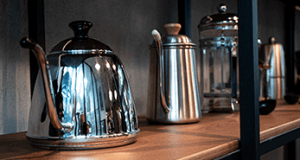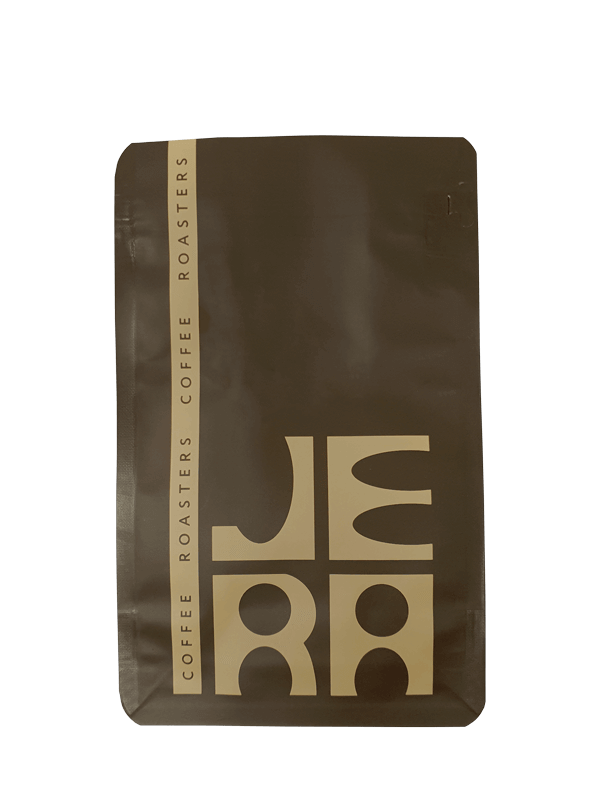קפה נטול קפאין | Minas Gerais
Brazil Decaf Arabica
קפה נטול קפאין 100% ערביקה. שיטת ה"Swiss Water" נחשבת לשיטת מיצוי של קפאין הנקי ביותר ומאפשרת להשאיר מקסימום של טעמים הטבעים של הקפה וביחד עם זות להוריד עד 99.8% קפאין מפולי קפה.
₪48.00 – ₪190.00
ברכישת כל סוגי קפה קלוי בסכום:
בין 600 ש"ח ל-1000 ש"ח עם קוד קופון "15%" תקבלו 15% הנחה
בין 1001 ש"ח ל-1500 ש"ח עם קוד קופון "25%" תקבלו 25% הנחה
מעל 1501 ש"ח עם קוד קופון "30%" תקבלו 30% הנחה
דקפאין
תהליך הדקפאין הוא תהליך של הסרת קפאין מפולי קפה ירוקים. יש לו שתי מטרות חשובות:
להסיר את הקפאין מבלי להוציא גם את התרכובות הארומטיות ואת טעמי הקפה;
להימנע מהשארת חומרים זרים ששימשו בתהליך הדקפאין בתוך הפולים.
בכל שיטות הדקפאין, הפולים הירוקים (שטרם נקלו) מושרים תחילה במים חמים — אך לא רותחים — כדי שייפתחו. השלבים הבאים משתנים: בחלק מהשיטות משתמשים בממיסים, באחרות משתמשים בגז פחמן דו-חמצני או בתמציות אורגניות מיוחדות. בהתאם לשיטה, ישתנו גם איכות, טעם וארומת הקפה.
שיטת Swiss Water
השיטה הנקראת גם "השיטה המימית" או "השיטה הלא-כימית", היא שיטה מורכבת ויקרה, אך ידידותית מאוד לסביבה, להוצאת קפאין מהקפה.
כך פועל התהליך: בהתחלה מכינים תמצית פולי קפה ירוקים (Green Coffee Extract) או GCE. לשם כך, משרים את המנה הראשונה של הקפה במים, כך שכל החומרים, כולל הקפאין, יעברו בהדרגה מהפולים אל המים. לאחר מכן מסננים את התמצית דרך מערכת של מסנני פחם. מכיוון שמולקולות הקפאין הן הגדולות ביותר, הן נלכדות במסנן, בעוד שהתרכובות הארומטיות עוברות דרכו ונשארות בתמצית. כך מתקבלת תמצית עשירה בטעמים וארומות של קפה — אך ללא קפאין.
לאחר מכן משרים במי התמצית את המנה הבאה של הפולים. כאשר הפולים באים במגע עם התמצית, מתרחש ניסיון לאיזון בין החומרים שבהם. מכיוון שבפולים ובתמצית יש אותו ריכוז של תרכובות טעם וארומה, אין תנועה של חומרים אלה. לעומת זאת, מכיוון שבפולים יש קפאין ובתמצית לא – הקפאין עובר מהפולים אל התמצית. בסיום התהליך, הקפאין עוזב את הפולים במטרה להשיג איזון, בעוד שטעם וארומה נשארים בפולים.
הבעיה עם השיטה הזו היא שטבילה אחת אינה מספיקה כדי להסיר את כל הקפאין. כדי לפתור זאת, לאחר ההשריה מסננים שוב את התמצית דרך מסנני פחם כדי להסיר את הקפאין שהצטבר. אחר כך הפולים נמשכים להשריה באותה תמצית עוד מספר פעמים, עד שריכוז הקפאין בפולים יורד ל-0.01%.
שיטת Swiss Water מאפשרת להסיר 99.9% מהקפאין מהפולים תוך שמירה על כל תכונות הטעם והארומה. כך מתקבל קפה ללא קפאין באיכות גבוהה, עם טעם עשיר כמעט כמו של קפה רגיל, בטוח יותר למערכת הלב וכלי הדם, וללא כל שאריות כימיות
Brazil Swiss Water Decaf Arabica
Decaffeination is the process of removing caffeine from green coffee beans. It has two important goals:
to remove caffeine without also extracting the aromatic and flavor compounds; to avoid leaving any foreign substances used during decaffeination in the beans.
In all decaffeination methods, the green, unroasted beans are first soaked in hot—but not boiling—water to open them up. The following steps vary: some methods use solvents, others use carbon dioxide or special organic concentrates. Depending on the method, the quality, flavor, and aroma of the coffee will differ.
The Swiss Water Process, also known as the water or chemical-free method, is a complex and expensive, but highly eco-friendly, way to decaffeinate coffee.
Here’s how Swiss Water decaffeination works: first, a Green Coffee Extract (GCE) is prepared. To do this, the first batch of coffee is soaked in water so that all compounds, including caffeine, gradually transfer from the beans into the water. The extract is then filtered through a system of carbon filters. Since caffeine molecules are the largest, they are trapped by the filter, while the flavor and aroma compounds pass through and remain in the extract. As a result, an extract rich in the flavor and aroma of coffee but free of caffeine is produced.
The next batch of beans is then soaked in the prepared extract. When the beans enter the extract, their compounds seek to reach equilibrium. Since both the beans and the extract contain the same amount of flavor and aroma compounds, there’s no transfer of these elements. However, because the beans contain caffeine and the extract does not, the caffeine diffuses from the beans into the extract. In the end, the caffeine from the beans transfers into the extract to restore balance, while the flavor and aromatic elements remain in the beans.
The issue with this method is that a single soaking does not remove all the caffeine from the beans. To address this, after soaking, the extract is once again filtered through carbon filters to remove the caffeine. Then the beans are soaked again in the extract several more times until their caffeine content is reduced to 0.01%.
The Swiss Water Process removes 99.9% of caffeine from the beans while preserving all the flavor and aromatic qualities. This makes decaf coffee taste just as good as regular coffee, safe for the cardiovascular system, and free from any chemical residues.
Coffee of Brazil
Brazil has held the leading position in global coffee production for over 150 years, accounting for about one-third of the world's total coffee output.
In Brazil, approximately 80% of the coffee grown is Arabica and 20% is Robusta. The main Arabica-producing regions are the states of Minas Gerais and São Paulo, which are further divided into smaller geographic zones: Sul de Minas, Cerrado, and Mogiana. Robusta is primarily cultivated in the states of Espírito Santo and Rondônia.
The most common processing methods in Brazil are natural (dry) and pulped natural (semi-washed). These methods contribute to the coffee's high sweetness and rich, full body. Overall, Brazilian coffee tends to have low acidity with dominant flavor notes of chocolate and nuts.
Washed Process Coffee
This method is especially popular in Kenya, Ethiopia, and Colombia. It involves removing the outer skin of the coffee cherry early in the process. Fermentation can take place either with or without the pulp, but typically, the pulp is removed, and the beans are thoroughly washed in water to eliminate the sticky mucilage layer that lies between the parchment and the fruit skin.
Washed coffees are known for their pronounced acidity, citrus notes, and elegant character. They produce clean, crisp brews that highlight the coffee's clarity and brightness.










